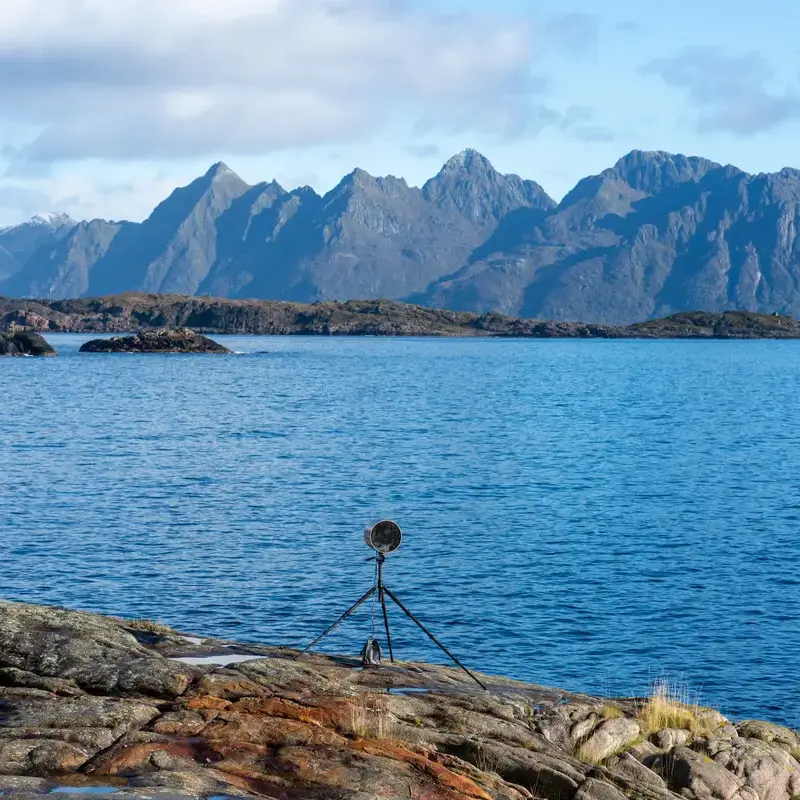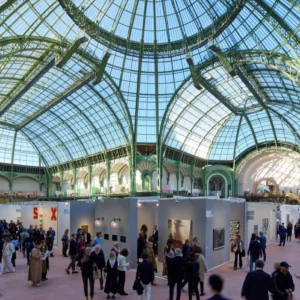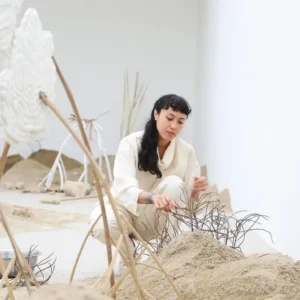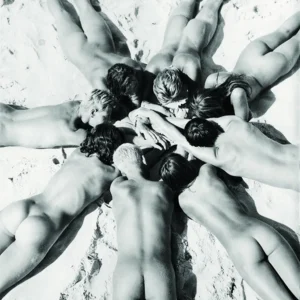The Lofoten archipelago in Norway is renowned for its dramatic fjords and jagged mountains. The Lofoten International Art Festival (LIAF), Scandinavia’s longest-running contemporary art biennial, features sound-based projects that highlight the region’s rich history and stunning landscape.
Curated by Kjersti Solbakken, the 18th edition of the festival is centered in Svolvær, with satellite projects in Norway and New York City. LIAF is a migratory biennial, utilizing various spaces across Lofoten, echoing the travel of the region’s iconic codfish.
Cod, or “skrei,” is central to Lofoten’s identity, even appearing on Svolvær’s coat of arms. For over 1,000 years, locals and Norwegian fishing fleets have caught cod during its winter migration from the Barents Sea to spawn. The cod is dried on racks to produce stockfish, a major export since the Middle Ages.
In 1903, Lofoten became the second place in the world to send and receive a wireless telegraph message, following Italy. The Sørvågen Coastal Radio Station now houses Museum Nord, a venue for the festival, which explores the region’s telegraphy history to create an international exhibition, drawing parallels between human communication and natural phenomena like the northern lights and fish sonar.
Kraftholmen, a major festival venue, hosts artists’ talks, workshops, and notable video works, including Astrid Ardagh’s On Air (2024), a documentary about Norwegian retirees using ham radio and Morse code. The film highlights the importance of old communication methods during a Russian cyberattack in 2022.
The Zambian artist group Livingstone Office for Contemporary Art explores the “sonic corridors” between Lofoten and Zambia’s former capital.
Sámi artist Elle-Hánsa/Keviselie/Hans Ragnar Mathisen showcases woodcuts at the North Norwegian Art Centre.
Elisabeth Brun’s short film Big Tech Blues (2024) focuses on her hometown of Strengelvåg, northeast of Lofoten, and the community’s reaction to SpaceX selecting the village’s former school for a Starlink ground station. The film explores the irony of a communication breakdown within global networks and emphasizes the experience of sound—digital hums, children’s laughter, and natural elements.
The most ambitious project at LIAF 2024 was Island Eye Island Ear (IEIE, 1974-2024), a 50-year initiative to turn one of Lofoten’s smaller islands into a musical instrument. Originally envisioned by experimental musician David Tudor,, the project involved collaboration with Fujiko Nakaya, Jackie Matisse, choreographer Margaretha Åsberg, and members of the art and science collective Experiments in Art and Technology (EAT).
Although rehearsed multiple times, Tudor passed away before its full presentation. LIAF 2024 premiered the project with contributions from original team members and younger artists led by scholar You Nakai, who authored a book on Tudor. The event took place on Svinøya Island, featuring mirrors reflecting the landscape, kites designed by Matisse, and field recordings of the island’s seasonal sounds played through speakers.





